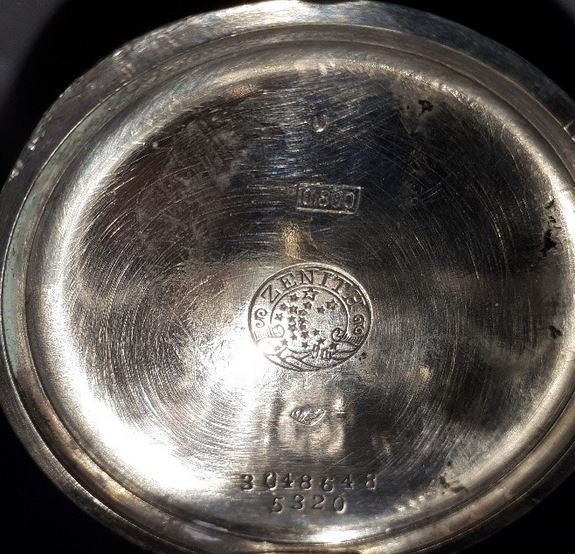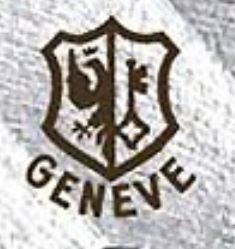Last updated on July 2, 2024
If you are collecting Swiss antique watches with cases made of precious metals, such as gold or silver, you need to know how to read Swiss hallmarks. At first, it looks a little bewildering, but it is actually quite simple and easier to decipher than British hallmarks. Note that only items that are made entirely of solid precious metal are hallmarked. Watch cases that have a layer of precious metal over a base metal core such as gold-filled, rolled gold, plated gold cannot be legally hallmarked.
Alloys
Precious metals are rarely used in their purest form. Typically, they tend to be mixed with other metals to improve pliability and durability. For example, pure gold is a malleable and relatively soft metal. It will scratch and dent easily with normal use. Therefore, it is usually alloyed with base metals to increase its hardness and durability. It is impossible to determine if the precious metal you are looking at is pure or an alloy by look or touch. Hallmarks are symbols applied to precious metals to indicate the amount of pure metal in the alloy. Traditionally, hallmarks are applied by striking with a metal punch. Typically, the hallmarks are added prior to the final polishing and finishing of a watch case. This is due to the light scratching and sharp edges that can be caused by the punch.
Hallmarks
An item made of precious metal that is to be sold commercially is, in most countries, stamped with these hallmarks to indicate the purity of the metal. It also includes the name of the manufacturer and other, additional markings, to indicate the date of production and the regulating agency. Hallmarking is a form of consumer protection that provides a guarantee of the quality of the precious metal purchased. In many countries, the testing of precious metals and hallmarking is controlled by an official assay office. Hallmarks are typically applied with a hammer and punch, a process that leaves sharp edges and spurs of metal. Therefore, the hallmarking generally occurs before the item is presented for its final polishing.
I have already written a post on the British hallmark system. This post will take a look at the hallmarking system used in Switzerland, which uses a slightly different model. Switzerland officially introduced hallmarking of gold and silver watch cases in December 1880. This system was effective from January 1881. However, hallmarking in Switzerland had been in place since the 15th century, with the individual cantons setting their own standards. For example, the Chevron was the hallmark used at Neuchâtel from the 1700s until the 1880s. The added word “argent” would distinguish the metal used as silver as opposed to the stand-alone Chevron which would indicate 18ct gold. With the introduction of the new Swiss system of hallmarking in 1881, there was uniformity throughout the nation.
Swiss hallmarks
The Swiss hallmarks for gold and silver can be seen below. These hallmarks marks would have been seen on the majority of Swiss watches with silver or gold cases imported to the UK between 1880 and 1907 before assay and hallmarking of the cases of imported watches in a British assay office became compulsory. British practice changed in 1907 when the hallmarking of foreign-made cases were strictly enforced by Customs.

Swiss hallmarks do not have date letters or any other way of indicating the date when an item was assayed. However, slight cosmetic changes to the hallmarks over the years can give a general indication of the date. The hallmarks, specifically show the standard or fineness of the metal and the location of the Assay office. In the hallmarks shown in the image above, the small X denotes the spot at which the identifier for the Assay office would be marked. For example, the Geneva office would be denoted by a G and the Zurich office by a Z.
Fineness
The standard or fineness is indicated by the number associated with each symbol. It is expressed as a proportion by weight, for example, 9-carat gold is expressed as 375. This means that 375 parts per thousand of the weight is gold, the rest is base metal. To ensure that items pass assay, the alloy used by the metalsmith will be slightly finer than the absolute minimum standard. The specific level of fineness is not shown by the hallmark> It only records that the item passed assay and was therefore of at least the required fineness. For example, if the alloy was 400 parts gold, it would be marked with the symbol for 375. This is because it is the minimum standard it meets.
At this point in time, I haven’t had any antique watches with Swiss hallmarks, pass through my collection. As soon as I do, I will post some photographs of the hallmarks.
Geneva Seal
The Geneva Seal or Poinçon de Genève is a quality that certifies the excellence and origin of fine watches made in Geneva, Switzerland. It was established by the Republic and Canton of Geneva in 1886 as a way to protect and promote the reputation of Geneva’s watchmaking industry.
The Poinçon de Genève is awarded to timepieces that meet strict criteria of craftsmanship, reliability and provenance. The seal also ensures that the watch is assembled, adjusted and cased in Geneva by qualified watchmakers.
The Poinçon de Genève is engraved on the movement of the watch, usually on the main plate or the bridge. The seal consists of an eagle with outstretched wings holding a key with the Geneva coat of arms in its claws. The Poinçon de Genève is a prestigious and rare distinction that only a few watch brands can claim.
A list of additional posts regarding antique watches can be found on the Guides page.
Related content
Hallmarks at Wikipedia.



I have inherited an antique pocket watch that has a small mark engraved on the movement. It is a shield divided vertically in two. On the is half of what looks to be an eagle on the right is a key. Beneath the shield is the word Geneve. Can you tell me anything about this mark? Great site, continue the good work!
Hi Les, this is likely to be the The Geneva Seal or Poinçon de Genève, which is a mark of quality. I have added a bit more detail in the post above. I hope this helps, Jason.
Hi Jason, that is exactly what I am seeing, the Geneva Seal or the Poinçon de Genève. I’ll stick with the first because I have no idea how to pronounce the second! Thanks for the explanation, Les.